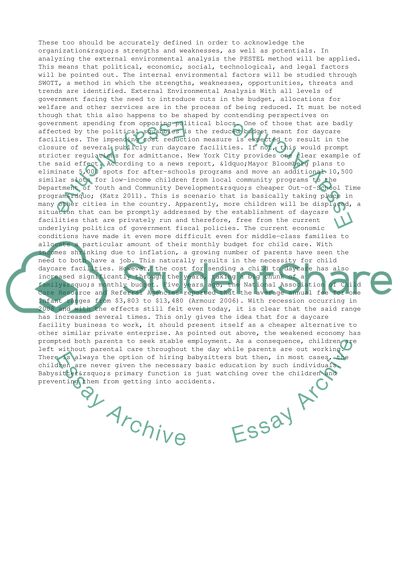Cite this document
(“Environmental Analysis for a Daycare Facility Research Proposal”, n.d.)
Retrieved from https://studentshare.org/business/1428545-external-and-internal-enviromental-analysis
Retrieved from https://studentshare.org/business/1428545-external-and-internal-enviromental-analysis
(Environmental Analysis for a Daycare Facility Research Proposal)
https://studentshare.org/business/1428545-external-and-internal-enviromental-analysis.
https://studentshare.org/business/1428545-external-and-internal-enviromental-analysis.
“Environmental Analysis for a Daycare Facility Research Proposal”, n.d. https://studentshare.org/business/1428545-external-and-internal-enviromental-analysis.


